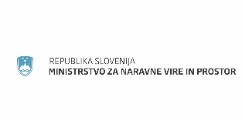Bober
Bobra (Castor fiber) le redko vidimo, veliko prej opazimo sledi njegove prisotnosti. Njegova najbolj prepoznavna lastnost je sploščen rep. Bober je bil v 18. stoletju iz naših krajev iztrebljen zaradi prekomernega lova zaradi kože, mesa in bobrovine. Njegov kožuh so uporabljali za izdelavo klobučevine. Ker gre za vodno žival, so njegovo meso uporabljali v času posta. Posamezni bobri so se ohranili le ponekod v srednji in severni Evropi. V 90. letih so bobre iz Bavarske ponovno naselili na Hrvaškem, od koder so se razširili tudi nazaj v Slovenijo in jih danes najdemo ob reki Muri, Dravi, Savi in Krki s pritoki. Na Goričkem je bila njegova prisotnost potrjena v reki Ledavi in Lukaj potoku ter na Krki in Dolenskem potoku.
Dokaz prisotnosti bobra so značilno objedena drevesa ![]() M. Podletnik
M. Podletnik
Opis
Bober je sesalec (Mammalia) in predstavnik redu glodavcev (Rodentia). Je največji glodavec v Evropi in za kapibaro iz Južne Amerike, drugi največji na svetu. V dolžino meri od 75-100 cm, dodatnih 30-40 cm meri njegov rep. V povprečju tehta okoli 20 kg, čeprav lahko največji primerki tehtajo tudi več kot 30 kg. Največ tehtajo jeseni. Noge s petimi prsti in močnimi kremplji so oblikovane za življenje v vodi, saj so prsti na zadnjih nogah zraščeni s plavalno kožico. Prednje noge so krajše in namenjene kopanju, prenašanju materiala ter držanju hrane. Plavalne noge in sploščen rep mu omogočajo hitro plavanje v vodi, medtem ko je na kopnem počasen in okoren. Bober je dober potapljač in lahko pod vodo zdrži tudi do 15 min. Gosti kožuh (do 23,000 dlak/cm2) je pretežno rjave barve, pri čemer je trebušna stran rahlo svetlejša od hrbta ( vir).
Prehrana in življenjski prostor
Bober je izključni rastlinojed, katerega dnevne potrebe predstavljajo cca. 2 kg lesne mase ali 1,2 kg vrbovja ( vir). Pri presnovi lesnih in rastlinskih vlaken mu pomaga posebna žleza. Poleti se prehranjuje s kopenskimi zelišči (dresen, kislice, perunike, trst, koruza...) ali vodnimi rastlinami (blatnik). Pozimi se hrani z lubjem in poganjki dreves ter njihovim listjem, ki si ga poleti zavleče v bližino vhoda v bobrišče. Podre lahko drevesa, ki v premeru merijo do 70 cm. Drevo s premerom 15 cm podre v manj kot eni uri. Posebne prilagoditve mu omogočajo hranjenje pod vodo. Posebna opna na očeh mu omogoča gledanje pod vodo, nosnice in sluhovode lahko pod vodo zapre, z dlako prekrite ustnice pa zapre tik za zobmi. Rumeni zobje so bogati z železom in zato zelo trpežni. Zobje bobru rastejo celo življenje in to kar s hitrostjo do 0,5 cm na mesec.
Dletasto oblikovani zobje puščajo značilne sledi na lesu ![]() M. Podletnik
M. Podletnik
Je značilen predstavnik vodnih živali, saj večino življenja preživi v vodi. Jezove gradi redko in so namenjeni višanju nivoja vodne gladine v zaledju, s čimer zviša nivo vode in poveča vodno površino ter s tem razširi svoj prehranjevalni habitat. Vodo z dvigovanjem gladine pripelje do samih dreves, zato jih zlahka podre v vodo in nato po vodi odvleče do svojega bobrišča. Prisotnost vode je tako ključna za prehranjevanje bobra. Zaradi ustvarjanja in razširjanja mokrišč ga imenujemo tudi ekološki inženir.
Bobrov jez lahko močno zviša vodno gladino pred jezom ![]() M. Podletnik
M. Podletnik
Razmnoževanje
Bober je monogamna živali in živi v večjih družinah (starši, lanski in letošnji mladiči). Družina lahko uporablja več bobrišč. Parjenje poteka pozimi, 2–3 mladiči se skotijo maja. Bobri živijo s starši in starejšimi sorojenci do svojega drugega leta, ko se ločijo od družine in poiščejo svoj teritorij. Je teritorialna žival, ki lahko več let živi na enem območju ( vir). Teritorij označuje z izločkom zadnjične žleze z izrazitim vonjem po mošusu. Dolžina reke, ki jo za preživetje potrebuje ena družina, v povprečju meri 13 km. Bober si brlog (bobrišče) zgradi v strmih brežinah vodotokov z vhodnim rovom pod vodno gladino. Bobrišče pogosto dodatno nadgradijo s kopičenjem vej ob vhodnem rovu ali na strehi bobrišča.
Ogroženost in varstveni status
Bober je v Sloveniji zavarovan in se ga na nekaterih območjih Natura 2000 tudi aktivno varuje. Eno od teh je reka Mura. Čeprav se je bober v naše kraje vrnil šele pred kratkim, ponekod že prihaja do konfliktov s človekom predvsem zaradi objedanja dreves in objedanja kulturnih rastlin. Objedanje dreves v obširnih poplavnih logih sicer ne povzroča gospodarske škode. Zaradi neznanja prihaja do namernih uničevanj jezov bobrov z namenom povečanja pretočnosti vodotokov. Bobra ogroža tudi promet s povozi.









